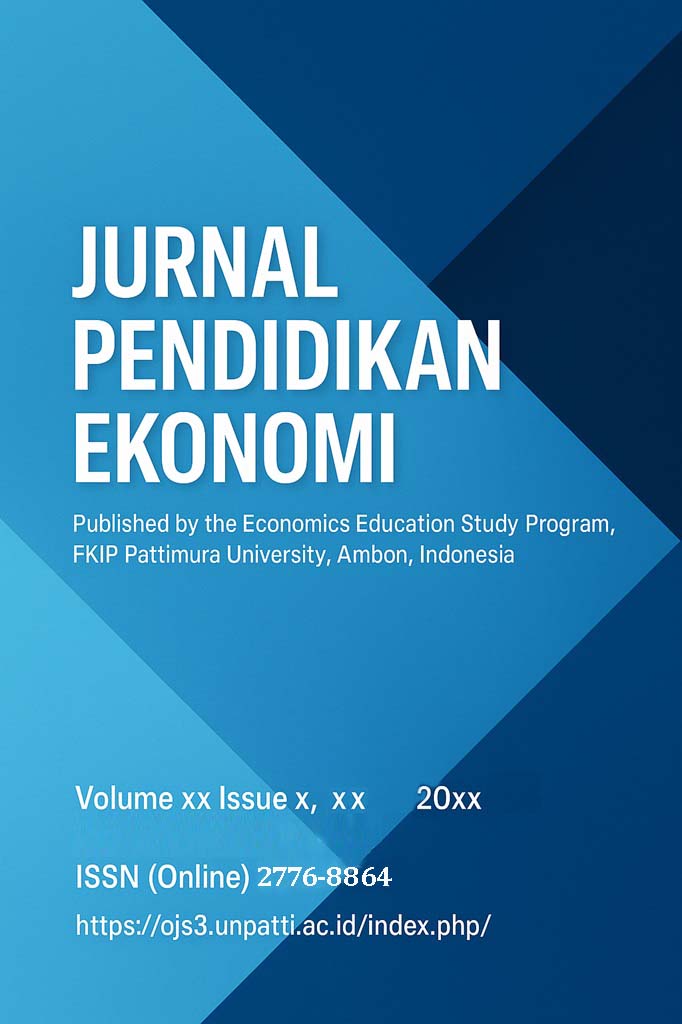Pengaruh Penggunaan Metode Card Sort terhadap Hasil Belajar Mata Pelajaran Ekonomi Kelas XI IIS di SMA Negeri 2 Tual
The Effect of Using the Card Sort Method on Learning Outcomes in Economics for Grade XI IIS Students at SMA Negeri 2 Tual
Abstract
This study aims to determine the effect of the Card Sort learning method on students' learning outcomes in Economics for Grade XI IIS at SMA Negeri 2 Tual. The research is grounded in the need for varied learning strategies to improve students’ understanding of both conceptual and applied economic content. The method used is a quasi-experimental design with a pretest-posttest control group. The population consisted of all Grade XI IIS students, with two randomly selected classes as samples: the experimental class applying the Card Sort method, and the control class using conventional learning methods. The instrument used was a multiple-choice test to assess student learning outcomes. The results indicate a significant difference between the learning outcomes of the experimental and control classes. Students taught using the Card Sort method showed improved concept mastery, active participation in learning, and better collaboration skills. These findings demonstrate that the Card Sort method is effective in enhancing economics learning outcomes. Therefore, it is recommended that teachers adopt this method more broadly as an alternative active learning strategy to improve classroom learning quality
Downloads
Copyright (c) 2025 Wania Tatroman, Amjad Salong, Silvia Manuhuttu

This work is licensed under a Creative Commons Attribution-NonCommercial 4.0 International License.












